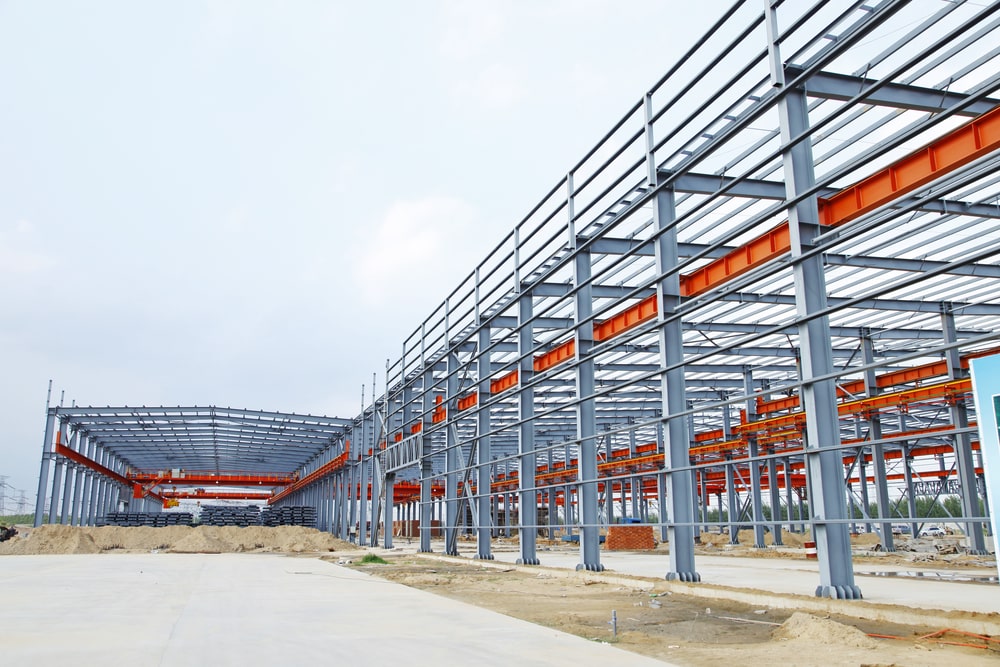News - Construction News
Quarterly growth outweighs monthly drop

The latest figures from ONS shows a decrease in monthly construction output, with falls in both new work and repair and maintenance leading the drop off. However, the picture improves when looking over the past quarter, which saw an increase of 2.3%.
The figures show a drop of 1.4% in volume terms in June 2022, following an upwardly revised 1.8% increase in May 2022. This is the first decrease in output since October 2021. Evidence showed that both months were adversely affected by the additional Jubilee bank holiday.
The main contributors to the monthly fall were new work (2.0%) and repair and maintenance (0.2%), while at sector level, private new housing and private commercial new work, which decreased 6.1% and 4.5%, respectively were the main catalysts.
Quarter remains strong
Despite the monthly drop, the level of construction output in June 2022 remained above the February 2020 pre-coronavirus pandemic level at 2.9% (£414M); repair and maintenance work was the outstanding category, with a 12.6% increase (£626M) above the February 2020 level. However, new work was 2.2% (£212M) below its February 2020 level.
Looking over the quarter, construction output actually increased 2.3% in Quarter 2 (Apr to June) 2022, with increases seen in both new work and repair and maintenance (3.3% and 0.8%, respectively). This is the largest quarterly rise since Quarter 2 2021 (4.0%). Increases in both new work and repair and maintenance (3.3% and 0.8%, respectively) contributed to the growth.
Inflation bites
A greater concern to the industry is signalled with a large drop in total construction new orders, which decreased 10.4% (£1,355M) in Quarter 2 2022 compared with Quarter 1 (Jan to Mar) 2022; this is the largest quarterly fall in construction new orders since Quarter 4 (Oct to Dec) 2020 (11.7%).
Over the past few months the industry has been plagued with both materials supply issues and price increases, neither of these factors have eased throughout June and evidence from the Monthly Business Survey for Construction and Allied Trades and the Business Insights and Conditions Survey (BICS) continues the narrative around the high costs of products such as concrete and masonry, specifically concrete, cut and shaped finished stone, plaster, bricks and tiles.
There were also mentions of product shortages, particularly for the smaller-sized firms. There were also continued significant mentions of higher fuel costs and VAT tax increases for red diesel, which have had an impact again this month.
June 2022 saw a record high for annual price growth (9.6%); this is the highest annual price growth since records began in January 2014.
Warehousing & industrial bolster figures
Private industrial new work has seen strong growth again this month and continues the strong growth seen over the last year. This has come from a rise in warehouses and distribution centres as illustrated in the new orders data for Quarter 2 2022. This is likely to be linked to consumers’ change in shopping habits over the coronavirus (COVID-19) pandemic because of more online spending.
SMEs will struggle
The fall in construction is a growing concern for small builders given the wider fall of 6.1% for private new housing and the continuing fall of 0.2% for repair, maintenance and improvement (RMI) work, says the Federation of Master Builders (FMB).
Brian Berry Chief Executive of the Federation of Master Builders (FMB) said: “Costs are up across the board for both builders and consumers alike which is affecting business confidence. With 98% of FMB members experiencing material cost increases builders are inevitably having to pass on these costs to consumers. The result is that householders are starting to hold back with many households increasingly concerned about rising energy prices and the threat of a recession later in the year.”
Berry concluded: “With the Government at a standstill, we won’t see any ambitious announcements to help support the sector until September with the new Prime Minister will be announced. In the meantime, the Conservative leadership candidates need to be explaining what they intend to do help the construction sector boost economic growth. Cutting the rate of VAT from 20% to 5% or below on all repair, maintenance, and improvement work would be a welcome start to help boost building work all across the country and help people insulate their homes ahead of further rising energy bills.”
Reversal of fortune
Gareth Belsham, director of the national property consultancy and surveyors Naismiths, commented: “The reversal has been sharp and painful. After seven straight months of uninterrupted growth, construction crunched into reverse in June – with the sector shrinking faster than any other part of the UK economy.
“Such volatility may be a short-term blip, and for now there’s still plenty to cheer in the data. New industrial work grew strongly in June and the construction industry as a whole grew by over £1bn in the second quarter compared to the first three months of 2022, marking the fastest quarterly rise since this time last year.
“But the slowdown in new orders is a worry, as it suggests that after months of enjoying full order books, some builders’ future is looking less rosy.
“Separate data showed that in England and Wales during the second quarter of 2022 the number of construction firms going to the wall surged to double the level seen during the same period last year.
“With construction prices rising by 9.6% in the year to June, their fastest level since records began, the combination of inflation and the rising risk of contractors going bust on the job is not a happy one – and once strong investment cases are being tested as increasing numbers of developers pause for thought before committing to build.”
If you would like to read more stories like this, then please click here
Related Articles
More News
- £8Bn to be invested in flood defences over the next decade
27 Jun 25
A record £7.9Bn over ten years has been committed to flood defences.
- Boosting British jobs and skills key for firms to win major infrastructure projects
26 Jun 25
Creating high quality British jobs and boosting skills in local communities will be key requirements
- Major rail supply deal to protect thousands of British Steel jobs
25 Jun 25
Thousands of British manufacturing jobs have been secured as the Transport Secretary finalises a major






